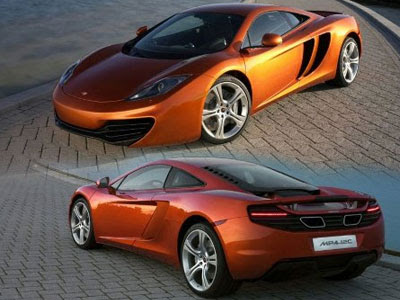For parts of the world that are growing increasingly urban, the future of the automobile looks small, green, smart and fun in the eyes of Ford designers who created the Ford Start Concept. It's a design vision inspired for the transportation needs of the world's mega cities.
2011 Ford Start Concept
Making its global debut at the 2010 Beijing Auto Show, the Ford Start Concept is more than simply a design exploration into the feasibility of a small car. It also demonstrates how Ford will extend the promise of its EcoBoost engine technology story even further – previewing a fuel-efficient petrol Ford EcoBoost engine with just three cylinders and 1.0 litre of displacement, yet the power of a larger, 1.6-litre I4 engine.
Start Concept was inspired in part by a growing global trend toward mass urbanisation. The world's top 20 mega-cities are home to consumers whose needs, attitudes and expectations may have more in common with mega-city dwellers in other nations than with their own countrymen. While these consumers share the challenges of living in an urban society, they also increasingly seek out product solutions that bring the best the world has to offer.
When it comes to designing eco-friendly urban transportation, automakers have tried just about everything. They've drawn up bubble cars, autonomic pods, even semi-robotic unicycles. Ford however, has decided against cribbing from the pages of a sci-fi novel and opted for something far more conventional: a three-door hatchback. Specifically, the Start concept the automaker unveiled at the 2010 Beijing Auto Show.
“Our ambition was to design a car that transcends the practical realities of commuting in these mega cities, and goes beyond just dressing the technology,” said Freeman Thomas, design director. “We wanted to design a car you would also love.”
There’s little not to love about the Start, Ford’s first concept in three years, and the first developed under the global auspices of the “One Ford” mantra. Although the Start shows traces of Ford’s “kinetic” design language, its rounded form is much more elegant. Angular edges are limited to both the shoulder lines and the slender, LED-powered headlamp and taillights. Thomas says the Start features “refined surface language” usually found on premium vehicles, and we’d agree -- from some angles, the Start almost resembles Audi’s new A1.

Function doesn’t necessarily follow form, however, as stylists made an effort to improve the car’s aerodynamics. Many surfaces, including the windshield, side window glass, and center stop lamp, are flush with the body, while an underbody aero pan further reduces the Start’s drag. The interior is as equally stylish and functional -- the floating dual-cockpit dashboard lends a sporty look, but a conceptual infotainment system, billed as “MyFord Mobile,” incorporates a multi-function touch screen to simplify the center stack.

While the Start’s form allowed Thomas’ team to flex their creative muscle, the mechanicals beneath the car are firmly rooted in reality. Ford’s teased the idea of an EcoBoost three-cylinder, but this is our first look at such an engine. The turbocharged, 1.0-liter I-3 utilizes a cast-iron block, but a cylinder head and sump fabricated from cast aluminum. Ford won’t talk power figures, saying only that early tests suggest it can produce power on par with its 1.6-liter I-4, which is rated at 120 horsepower in North America. Power is routed to the front wheels via an ordinary five-speed manual transaxle.
Created by a global team of designers working at Ford's Irvine (Calif.) Strategic Concepts Group Studios, this sporty, futuristic concept combines near-production Ford EcoBoost engine technology and slick aerodynamics in an environmentally friendly package with reduced greenhouse emissions, all wrapped in an exciting design.
Ford says the EcoBoost three-cylinder would allow the Start to emit well under 100 grams of carbon dioxide per kilometer. That’s not a crucial figure here in North America, but it is in Europe, where Ford sells the similar-sized Ka. We doubt the Start is destined for production anytime soon, but look for the turbo-three to land in some small European Fords in the near future.
“The Ford Start Concept is the first pure concept we’ve developed under our ‘One Ford’ approach,” says Moray Callum, executive director, Americas Design. “J Mays, Martin Smith and I worked with Freeman and his team to deliver a concept that visually reinforces the fun to drive element that is at the core of the Ford brand DNA.”





























